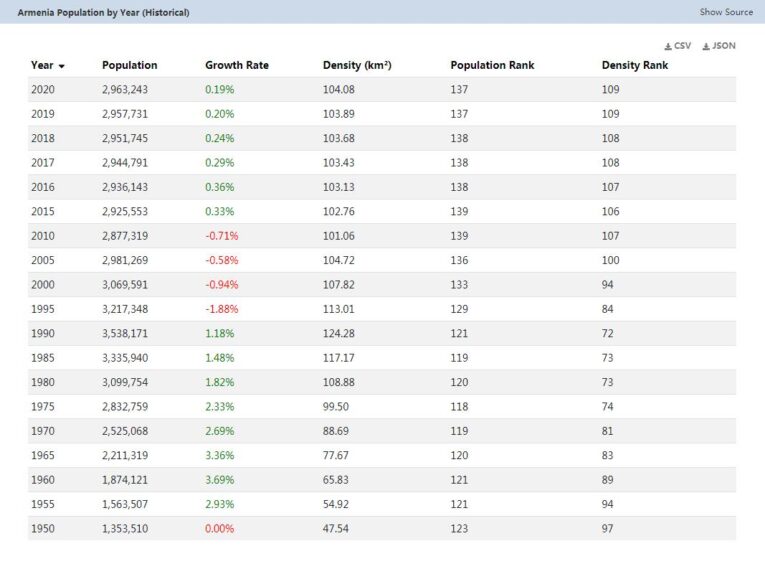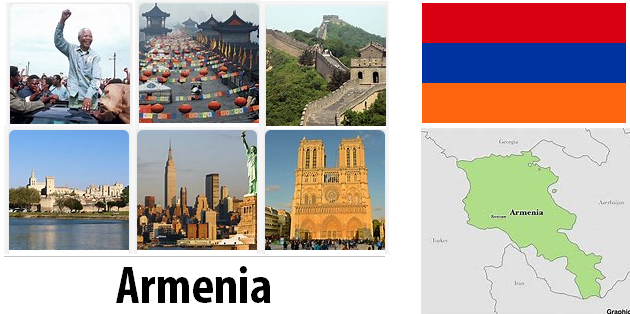With the name of Armenia it was indicated in the past, but still is, the mountainous area of volcanic origin between the Aegean and central Asia.
In Roman times it was called only a part of Western Asia Minor. To differentiate these two regions, the first was called Armenia Maggiore and the other Little Armenia. However, even before, with the Assyrians and the Babylonians, the town had the name of Urartu from which, by assonance, it arrived in Ararat. The Greeks, through the works of Herodotus, told us that the inhabitants were the Alarodi.
All these denominations, however, are later than 1500 BC because before the region, called Subartu, was one of the four in the world known by the Sumerian-Akkadians. It was divided into many districts whose names have not come down to us.
Armenia entered Roman orbit in 66 BC.
In the second century Christianity entered Armenia and flourished luxuriantly; Armenian Christians by the Turks endured countless religious persecution.
In the 5th century Armenia passed into the hands of the Persians and in the VII century in those of the Arabs. The country was administered by a Muslim governor but in 744 the Caliph Marwan entrusted the charge to an Armenian named Asot, of the Bagratidi family. See Countryaah for population and country facts about Armenia.
Aggravated by too high taxes, the Armenians, instead of remaining united and united with each other to make themselves stronger, blamed Asot for their situation; contested and rebelled. Marwan was forced to restore a Muslim governor.
Another Armenian in 780 triggered a popular uprising; he was the Bagratida Muset Mamikonian; together with his son, also named Asot, he had large fortifications built around the city of Ani, making it almost impregnable and within this fortress the Armenians maintained their independence.
This event opened the eyes of Caliph Mutawakkil, who in 859, after assessing the Armenians better, appointed Asot as governor general with the title of “prince of princes”.
It was in this period that the Armenian lords began to build solid castles where they could stay safe, with their people, in case of enemy incursions. Thus was born the Armenian feudality even before that of the Crusades.
In 885 Armenian bishops and princes asked Byzantium and Baghdad for the royal crown for Asot, and the Bagratid dynasty arose.
Asot I and four successive rulers had to endure struggles not only with neighboring Muslim rulers, too ambitious and enterprising, but also with the Armenian lords themselves.
Armenia is divided into seven kingdoms soon, plus the minor lords of possessions. It weakened and this suggested an invasion to the Turks.The 1079 was the year that marked the end of the dynasty of bagratuni dynasty. The beautiful city of Ani, damaged by long wars and incursions by the Kurds, Georgians, Tartars and Persians, was greatly damaged and in 1230 was completely destroyed by an earthquake. The inhabitants dispersed in the Caucasus, Crimea, Moldova and even went to Poland.
The Great Armenia, mountainous country, divided by so many internal discord and subjected to constant raids Muslim, he fell into ruin. At the time of the Turkish invasion, the last Armenian king Cagik II left the country with some followers and their families, headed for the Cilicia region, with the hope of rebuilding a kingdom there.
But even here struggles over struggles prevented its realization. The country was frequented even by the Knights of the Crusades. Goffredo di Buglione also passed there, as well as, in 1187, Federico Barbarossa after Saladin, sultan of Egypt, had conquered Jerusalem.
In 1199 the reign of New Armenia or Cilicia began. Leo II was the first ruler of this new state: he did his utmost to bring it to a good economic level, therefore he favored trade, which was immediately taken advantage of by Genoese and Venetians.
In the years 1307/1308 was celebrated the union of the Armenian Church with the Roman one. This provoked religious wars and these, for the most part, were the cause of the ruin of the kingdom of Cilicia. Armenia lost its independence. The Armenian people no longer had a political existence except through its Church. And therefore his civil history could only be identified with the religious one.
In this land, Genghis Khan, Tamerlane and Muhammad II came into conflict. Throughout the seventeenth century the country was disputed between Turks and Persians. In 1605, the Persian Shah Abbas-founded, near Isfahan, a suburb inhabited exclusively by Armenians, who had been brought there by force. The suburb was called “Nuova Giulfa”. But the successors of Shah-Abbas were not so magnanimous with the Armenians among whom, meanwhile, the desire for freedom and independence began to meander. This, through numerous negative vicissitudes, gradually grew larger; in the years 1887/1890 the first revolutionary committees modeled on Russian Nihilist committees began to be founded. The first violence began which Sultan Abd-ul Hamid responded by carrying out a massacre of Armenians at the hands of the Kurds. France, England and Russia intervened to demand reforms and improvements for the Armenian people. The sultan did not comply with these requests.

